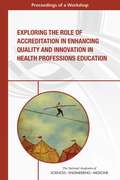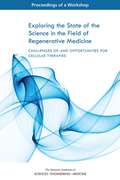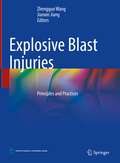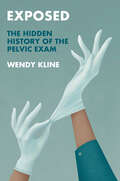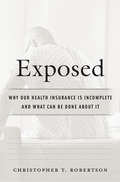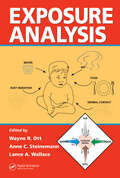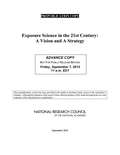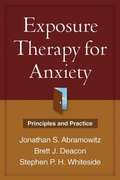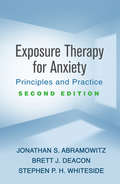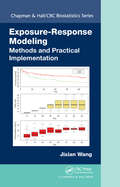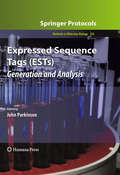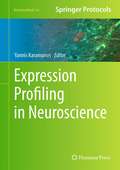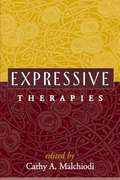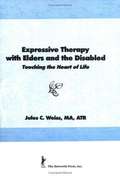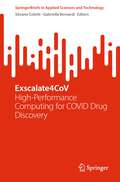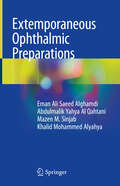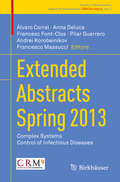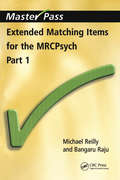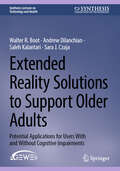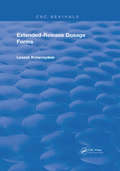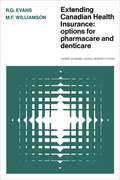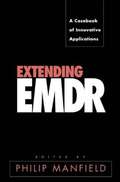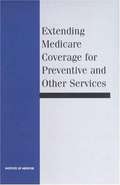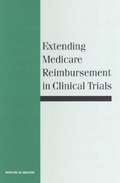- Table View
- List View
Exploring the Role of Accreditation in Enhancing Quality and Innovation in Health Professions Education: Proceedings of a Workshop
by Engineering Medicine National Academies of SciencesThe purpose of accreditation is to build a competent health workforce by ensuring the quality of training taking place within those institutions that have met certain criteria. It is the combination of institution or program accreditation with individual licensure—for confirming practitioner competence—that governments and professions use to reassure the public of the capability of its health workforce. Accreditation offers educational quality assurance to students, governments, ministries, and society. Given the rapid changes in society, health, and health care, the National Academies of Sciences, Engineering, and Medicine hosted a workshop in April 2016, aimed to explore global shifts in society, health, health care, and education, and their potential effects on general principles of program accreditation across the continuum of health professional education. Participants explored the effect of societal shifts on new and evolving health professional learning opportunities to best ensure quality education is offered by institutions regardless of the program or delivery platform. This publication summarizes the presentations and discussions from the workshop.
Exploring the State of the Science in the Field of Regenerative Medicine: Proceedings of a Workshop
by Engineering Medicine National Academies of SciencesRegenerative medicine holds the potential to create living, functional cells and tissues that can be used to repair or replace those that have suffered potentially irreparable damage due to disease, age, traumatic injury, or genetic and congenital defects. The field of regenerative medicine is broad and includes research and development components of gene and cell therapies, tissue engineering, and non-biologic constructs. Although regenerative medicine has the potential to improve health and deliver economic benefits, this relatively new field faces challenges to developing policies and procedures to support the development of novel therapies are both safe and effective. In October 2016, the National Academies of Sciences, Engineering, and Medicine hosted a public workshop with the goal of developing a broad understanding of the opportunities and challenges associated with regenerative medicine cellular therapies and related technologies. Participants explored the state of the science of cell-based regenerative therapies within the larger context of patient care and policy. This publication summarizes the presentations and discussions from the workshop.
Explosive Blast Injuries: Principles and Practices
by Zhengguo Wang Jianxin JiangThis book presents a systematic summary of a series of achievements of blast injury studies in China and the latest progress in blast injury treatment including injuries caused by various explosion accidents (such as coal mine gas explosion, and chemical explosion) and terrorist bombing around the world over the past three decades. The book not only covers comprehensive introductions to the knowledge and injury theories about explosive shock waves, but also expounds the prevention and treatment of various explosion shock injuries and their complications with generalized summaries.This book not only contains a diverse range of content, but also immense practicality. It elaborates on the causes of various types of explosion and impact injuries, as well as protection and treatment measures, serving not only as an important basis and technical support for military health service support in modern warfare, but is also extremely important in providing practical value in peacetime disaster prevention, mitigation and relief for patients.
Exposed: The Hidden History of the Pelvic Exam (History of Health and Illness)
by Wendy KlineThe pelvic exam. If you’ve ever had one, you’re probably already wincing. It might be considered a routine medical procedure, but for most of us, it is anything from unpleasant to traumatic. In Exposed, noted historian Wendy Kline uncovers the procedure’s fascinating—and often disturbing—history. From gynecological research on enslaved women’s bodies to nonconsensual practice on anesthetized patients, the pelvic exam as we know it today carries the burden of its sordid past. Its story is one of pain and pleasure, life-saving discoveries and heartbreaking encounters, questionable procedures and triumphant breakthroughs. Drawing on previously unpublished archival sources, along with interviews with patients, providers, and activists, Kline traces key moments and movements in gynecological history, from the surgeons of the nineteenth century to the OB/GYNs of today. This powerful book reminds us that the pelvic exam is has never been “just” a medical procedure, and that we can no longer afford to let the pelvic exam remain unexamined.
Exposed: Why Our Health Insurance Is Incomplete and What Can Be Done about It
by Christopher T. RobertsonDemocrats and Republicans fight endlessly over health care, but neither side disputes one of the system’s most basic flaws: the foisting on patients of substantial costs through deductibles, copayments, and coinsurance. Marshalling a decade of research, Christopher Robertson shows why this model is dysfunctional and offers ideas for improvement.
Exposure Analysis
by Wayne R. Ott Anne C. Steinemann Lance A. WallaceWritten by experts, Exposure Analysis is the first complete resource in the emerging scientific discipline of exposure analysis. A comprehensive source on the environmental pollutants that affect human health, the book discusses human exposure through pathways including air, food, water, dermal absorption, and, for children, non-food ingesti
Exposure Science in the 21st Century
by National Research Council Division on Earth and Life Studies Board on Environmental Studies and Toxicology Committee on Human and Environmental Exposure Science in the 21st CenturyFrom the use of personal products to our consumption of food, water, and air, people are exposed to a wide array of agents each day--many with the potential to affect health. Exposure Science in the 21st Century: A Vision and A Strategy investigates the contact of humans or other organisms with those agents (that is, chemical, physical, and biologic stressors) and their fate in living systems. The concept of exposure science has been instrumental in helping us understand how stressors affect human and ecosystem health, and in efforts to prevent or reduce contact with harmful stressors. In this way exposure science has played an integral role in many areas of environmental health, and can help meet growing needs in environmental regulation, urban and ecosystem planning, and disaster management. Exposure Science in the 21st Century: A Vision and A Strategy explains that there are increasing demands for exposure science information, for example to meet needs for data on the thousands of chemicals introduced into the market each year, and to better understand the health effects of prolonged low-level exposure to stressors. Recent advances in tools and technologies--including sensor systems, analytic methods, molecular technologies, computational tools, and bioinformatics--have provided the potential for more accurate and comprehensive exposure science data than ever before. This report also provides a roadmap to take advantage of the technologic innovations and strategic collaborations to move exposure science into the future.
Exposure Therapy for Anxiety
by Brett Deacon Jonathan AbramowitzGoing beyond one-size-fits-all approaches, this indispensable book describes how to design and implement exposure-based interventions for clients suffering from any type of pathological worry or fear. The expert authors translate cutting-edge theory and research into flexible guidelines for real-world clinical practice. They present the nuts and bolts of individualized assessment and treatment planning and offer strategies for engaging clients successfully. Chapters organized around common anxiety triggers feature a wealth of case examples and specific ideas for exposure exercises. Special topics include working with child clients and combining therapy with medication. Several reproducible handouts and forms are provided.
Exposure Therapy for Anxiety, Second Edition: Principles and Practice
by Jonathan S. Abramowitz Brett J. Deacon Stephen P. WhitesideNow revised and expanded to include cutting-edge acceptance-based techniques and a new focus on inhibitory learning, this is the leading guide to therapeutic exposure, a crucial element of evidence-based psychological treatments for anxiety. The book helps the clinician gain skills and confidence for implementing exposure successfully and tailoring interventions to each client's needs, regardless of diagnosis. The theoretical and empirical bases of exposure are reviewed and specialized assessment and treatment planning techniques described. User-friendly features include illustrative case examples, sample treatment plans, ideas for exercises targeting specific types of fears, and reproducible handouts and forms that can be downloaded and printed in a convenient 8½" x 11" size. New to This Edition *Chapter on acceptance and commitment therapy (ACT) techniques. *Reflects a shift in the field toward inhibitory learning--helping clients learn to tolerate anxiety and uncertainty to maximize long-term outcomes. *Chapter on uses of technology, such as computer-based therapy and virtual reality tools. *Conceptual, empirical, and clinical advances woven throughout.
Exposure Therapy with Children and Adolescents
by Michael A. Southam-GerowExposure therapy is highly effective for treating anxiety disorders in children and adolescents, yet implementation with youth and their parents entails unique challenges. Packed with clinical examples, this concise book provides practical, developmentally savvy guidelines for conducting therapeutic exposure with 5- to 18-year-olds. At each stage of the process, it addresses clinicians' most common questions and concerns. Coverage includes how to build a strong initial assessment; develop a fear ladder; individualize exposure exercises for different problem areas, including phobia, social anxiety, worry, separation anxiety, and panic; and monitor progress. Also discussed is when and how to integrate exposure with relaxation and cognitive strategies.
Exposure-Response Modeling: Methods and Practical Implementation (Chapman & Hall/CRC Biostatistics Series)
by Jixian WangDiscover the Latest Statistical Approaches for Modeling Exposure-Response RelationshipsWritten by an applied statistician with extensive practical experience in drug development, Exposure-Response Modeling: Methods and Practical Implementation explores a wide range of topics in exposure-response modeling, from traditional pharmacokinetic-pharmacody
Expressed Sequence Tags (ESTs)
by John ParkinsonOver the past two decades, expressed sequence tags (ESTs - single pass reads from randomly selected cDNAs), have proven to be a remarkably cost-effective route for the purposes of gene discovery. Gaining in popularity, millions of ESTs have now been generated for over a thousand different species. In Expressed Sequence Tags (ESTs): Generation and Analysis, leading experts in the field introduce the reader to many of the fundamental concepts underlying the generation and analysis of ESTs through readily accessible and affordable sequencing technologies. The volume focuses on various methods used to generate, process and analyze EST datasets, while also exploring the use of EST technology for other purposes such as expression profiling, analysis of alternative transcripts, and phylogenomics. Written in the highly successful Methods in Molecular BiologyTM series format, chapters include brief introductions to their respective topics, lists of the necessary materials and programs, step-by-step, readily reproducible protocols, and Notes sections, which highlight tips on troubleshooting and avoiding known pitfalls. Cutting-edge and easy to use, Expressed Sequence Tags (ESTs): Generation and Analysis serves as an ideal reference for scientists continuing the vital investigation of genes and the genome.
Expression Profiling in Neuroscience
by Yannis KaramanosTranscriptomics and proteomics, studying the profile of the expression of nucleic acids and proteins respectively, are increasingly applied to gain a mechanistic insight into a wide spectrum of investigation, and the use of expression profiling studies for the central nervous system and brain function aids in the understanding of neurodegenerative disorders and tumor development mechanisms. In Expression Profiling in Neuroscience, expert researchers provide a survey of the most commonly used approaches in the field and scan the different ways of studying the central nervous system/brain environment through expression profiling. The first part addresses the gene expression profiling of the brain at a large scale or to a specific cell type such as blood-brain barrier endothelium. Then, the second part describes the protein expression studies and the different technologies applied. Written for the popular Neuromethods series, chapters include corresponding background information, tested laboratory protocols, and step-by-step methods for reproducible laboratory experiments. Detailed and authoritative, Expression Profiling in Neuroscience presents the state-of-the-art techniques necessary to expand research further into this vital area of study.
Expressive Therapies
by Cathy A. MalchiodiPsychotherapists, counselors, and other health care professionals are increasingly turning to expressive therapies--including art, music, dance/movement, drama, poetry, play, sandtray, and integrative approaches--in their work with clients of all ages. This timely volume offers a comprehensive presentation of these innovative and powerful modalities. Expert contributors present in-depth descriptions of their respective approaches to intervention with children, adults, and groups, giving particular attention to strategies for integrating expressive work with other forms of psychotherapy.
Expressive Therapy with Elders and the Disabled: Touching the Heart of Life
by Jules C. WeissA classic book on the use of expressive therapies with uncommunicative elders and the disabled. This poignant guide explores group and individual therapeutic activities that promote creativity, self-expression, communication, and understanding of one's life. An experienced art therapist relates his insights into the psychosocial dynamics of elders and the disabled and shares his awareness of the sensitivity and understanding required to reach the "unreachable. " Health care workers will find this illustrated volume rich in therapeutic techniques and processes applicable to the care and growth of psychologically and physically disabled or minimally handicapped adults and elders.
Exscalate4CoV: High-Performance Computing for COVID Drug Discovery (SpringerBriefs in Applied Sciences and Technology)
by Gabriella Bernardi Silvano ColettiThis book highlights the different aspects of the research project “E4C Horizon 2020 European Project” aimed at fighting the coronavirus by combining the best supercomputing resources and artificial intelligence with state-of-the-art experimental facilities up through clinical validation. Coronavirus disease has become an important public issue across the globe since December 2019. There is an urgent need to develop potent anti-COVID-19 agents for the prevention of the outbreak and stop viral infections. To this aim, a public–private consortium composed by European and national infrastructures, center of excellence, universities, and a pharmaceutical company started the E4C Horizon 2020 European Project: Its core idea was to use the EXaSCale smArt pLatform Against paThogEns (EXSCALATE) supercomputing platform for a process known as “drug repurposing”, namely to identify the most promising safe in man drugs for immediate treatment of the already infected population and then novel pan-coronavirus inhibitors to address future emergencies. This ambitious goal exploited a “chemical library” of 500 billion molecules, thanks to a processing capacity of more than 3 million molecules per second, made available by the computing power of the EXSCALATE platform.
Extemporaneous Ophthalmic Preparations
by Mazen M. Sinjab Eman Ali Alghamdi Abdulmalik Yahya Al Qahtani Khalid Mohammed AlyahyaThis book provides a list of concise extemporaneous ophthalmic preparations, and standardizes the formulation of the products by suggesting specific strength, route of administration, appropriate vehicle, and method of preparation. Pharmaceutical industries have greatly expanded their share of ophthalmic drugs in recent years. However, physicians and pharmacists are frequently called to prepare sterile products intended for ophthalmic use due to lack of availability of licensed drugs in the market. This book contains the most appropriate formulation of each medication based on published and documented stability data. Extemporaneous Ophthalmic Preparations is the first book of its kind, making it a unique and valuable companion for many physicians and pharmacy practitioners who are frequently engaged in the compounding of sterile ophthalmic preparation.
Extended Abstracts Spring 2013
by Andrei Korobeinikov Álvaro Corral Anna Deluca Francesc Font-Clos Pilar Guerrero Francesco MassucciThe two parts of this volume feature seventeen and six extended conference abstracts corresponding to selected talks given by participants at "Joint CRM-Imperial College Workshop in Complex Systems" and "Emergence, Spread and Control of Infectious Diseases" respectively, both held at the Centre de Recerca Matemàtica in Barcelona in spring 2013. Most of them are short articles giving preliminary presentations of new results not yet published in regular research journals. The articles are the result from a direct collaboration among active researchers in the area after working in a dynamic and productive atmosphere Almost everything that is interesting and important for society is complex; here, examples scattered across science are presented in order to illustrate the cross-disciplinary richness of state-of-the-art complex systems research: fracture avalanches and rain showers that mimic earthquakes; highly organized graphs that account for processes in neural networks, metabolic networks, food webs, or language; models for DNA dynamics; or statistical methods to test complexity in the form of structure along many different scales. The mathematics is put to work for the modeling of the real system, and the models are kept at a minimum level to allow the understanding of the essentials of the real system. The book is intended for established researchers, as well as for PhD and postdoc students who wish to learn more about the latest advances in these active areas of research.
Extended Matching Items for the MRCPsych: Part 1 (MasterPass)
by Michael Reilly Bangaru RajuExtended Matching Items (EMIs) are becoming increasingly important part of the MRCPsych written examination This book prepares candidates by describing the format of EMIs, followed by numerous examples of typical examination questions. It covers the four main subject areas of the examination: psychology and human development; psychopharmacology; descriptive and psychodynamic psychopathology; and clinical theory and skills. Questions are ordered in increasing difficulty so that candidates not familiar with the format of EMIs can progressively test their examination preparation. Full answers, explanations and references are provided.
Extended Reality Solutions to Support Older Adults: Potential Applications for Users With and Without Cognitive Impairments (Synthesis Lectures on Technology and Health)
by Sara J. Czaja Walter R. Boot Andrew Dilanchian Saleh KalantariThis book explores one way in which recent hardware and software advances have placed humanity on the precipice of a significant shift in how technology can shape our interactions with the world around us: the application of transformative extended reality (XR) technology solutions to support the health, wellness, quality of life, and independence of older adults living with and without cognitive impairments. The book provides an overview of the state-of-the art research on XR-based solutions utilizing virtual reality (VR) and augmented reality (AR), challenges that can addressed with these technologies, evidence to date on the efficacy of these solutions, and the nature of these solutions and challenges to their implementation. It explores practical ways XR can be integrated into health and lifestyle maintenance activities for older populations in a diversity of situations through thematic chapters using realistic personas and scenarios. These thematic chapters are organized around the AGE-WELL Challenge Area topics, including staying connected, healthy lifestyles and wellness, mobility, and cognitive health, as well as an additional emphasis on leisure. Other chapters provide guidance on important issues to consider when designing XR-based solutions for older adults, how to evaluate and test XR solutions, the implementation of the user-centered design process, and the book concludes by highlighting unanswered questions and future research directions. This book approaches XR for older adults with and without cognitive impairments from the authors’ diverse research backgrounds in psychology, engineering, gerontology, and design. It will be of interest to academic and industry professionals as well as care providers considering the potential for XR interventions now and in the future.
Extended-Release Dosage Forms (Routledge Revivals)
by Laezek KrowczynskiFirst Published in 1987, this book offers a full, comprehensive guide to the process of administering the correct dosage in medicine. Carefully compiled and filled with a vast repertoire of notes, diagrams, and references this book serves as a useful reference for students of medicine, and other practitioners in their respective fields.
Extending Canadian Health Insurance: Options for Pharmacare and Denticare (Ontario Economic Council research studies #13)
by R. G. Evans M. F. WilliamsonThis study explores the policy options a provincial government might consider in extending health care coverage to the purchase of prescription drugs and dental care. It examines the major public policy objectives involved, such as spreading risk, redistributing wealth, and reducing the barriers to care, and evaluates alternative programs in terms of their costs and efficiency as well as their realization of the basic social objectives of health care. Using varied statistics, some drawn from schemes in other provinces, it estimates what different packages of pharmacare and denticare would have cost in Ontario in 1975. The results indicate that universal coverage may be one of the most costly and least effective options. Based on current modes of service delivery, a universal pharmacare and denticare program would transfer wealth to upper income groups without significantly improving the utilization of health care services.<P><P> A study of drug manufacturing and retailing systems in Canada and of the structure of dental services suggests that wasteful methods of service delivery could lower per capita costs by 30 to 40 per cent.<P> Potential annual savings in pharmacy and dentistry together in Ontario run into the hundreds of millions of dollars. The authors show how a combination of competitive pressures and selective public intervention can be used to rationalize the delivery system. They caution, however, that such potential savings will be forever unrealized if a public-insurance type of program is introduced which freezes the existing system in place and forecloses the options of either public provision or private market competition.
Extending EMDR: A Casebook of Innovative Applications
by Philip MansfieldPicking up where eye movement desensitization and reprocessing (EMDR) training leaves off, this book shows how EMDR can be used by therapists with different orientations, such as psychodynamic, Jungian and cognitive. Their patients have various diagnoses, including major depression, attachment disorder, post-traumatic stress disorder and various personality disorders; all are helped by the incorporation of EMDR into their treatment, as demonstrated by the case studies.
Extending Medicare Coverage for Preventive and Other Services
by Institute of MedicineThe National Academies Press (NAP)--publisher for the National Academies--publishes more than 200 books a year offering the most authoritative views, definitive information, and groundbreaking recommendations on a wide range of topics in science, engineering, and health. Our books are unique in that they are authored by the nation's leading experts in every scientific field.
Extending Medicare Reimbursement in Clinical Trials
by Institute of MedicineThe National Academies Press (NAP)--publisher for the National Academies--publishes more than 200 books a year offering the most authoritative views, definitive information, and groundbreaking recommendations on a wide range of topics in science, engineering, and health. Our books are unique in that they are authored by the nation's leading experts in every scientific field.
